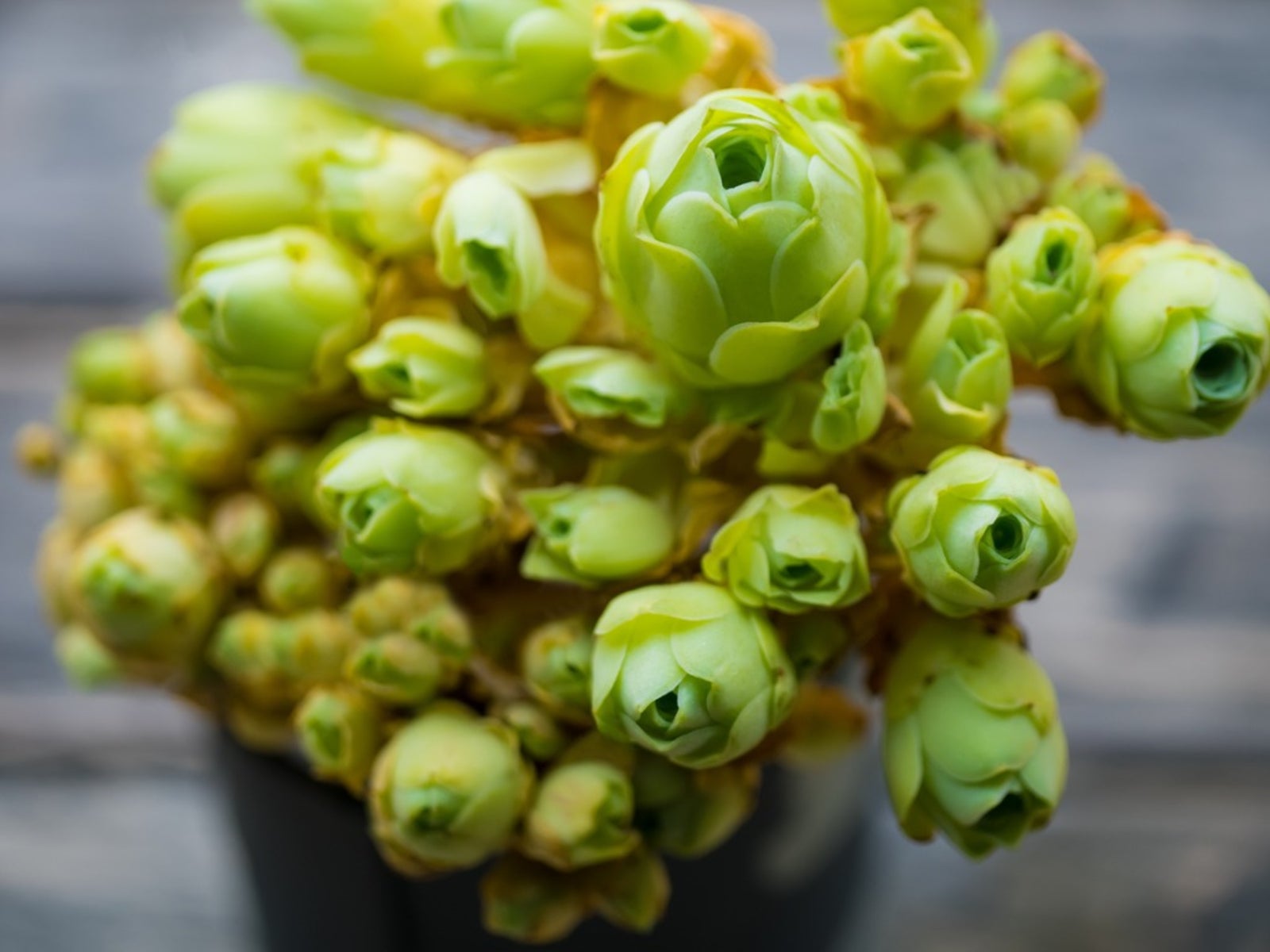Learn About A Rose-Shaped Succulent Called Greenovia Dodrentalis


There are over 60 different families of plants that encompass succulents. Succulents are such a diverse group that you could probably name a shape or form and find a representative succulent. Greenovia succulent is evocative of roses, with similar layered petals and curved form. The rose-shaped succulent called Greenovia dodrentalis is an example of this form and is in the family Crassulaceae. These tiny, rare plants are hard to find, but if you do get a hold of one, make sure you know how to grow greenovia so your unique discovery will thrive.
Greenovia Succulent Info
Cacti and succulent aficionados are forever looking for the next new plant and building unique collections. Rose-shaped greenovia is one of those hard-to-find specimens that many of us would give our eye teeth to own. If you are lucky, you might find them at a specialty online nursery or a friend’s plant may have pups you can acquire. Caring for greenovia is very similar to the maintenance for other succulents. As with all these sun-loving plants, water usage is the main issue. Greenovia are tiny little plants, only about 6 inches (15 cm.) tall at maturity. They are found in the eastern and western parts of Tenerife in the Canary Islands. The wild plants are in danger due to over collection and tourist activities. They are squat bodied, grayish green plants that often have a rose tinge at the edges of the leaves. The leaves are fleshy, smooth, oval to paddle shaped and layered upon another, just as rose petals nestle against themselves. By the time rose-shaped greenovia is mature, the lowest older petals pull away from the main body a bit and develop a soft, sandy, pink tone. Over time, the plant can produce pups, or offsets, which you can divide away from the mother for easy new plants.
How to Grow Greenovia
Greenovia is an infrequent flowering plant and there is evidence that it is monocarpic. This means it will flower once, eventually, and then die after it sets seed. If your plant flowers and doesn’t have pups, this is bad news. You may certainly collect and plant the seed, but as with most succulents, you will have to wait years for any identifiable form. The rose-shaped succulent called Greenovia dodrentalis does bloom more frequently than other greenovia without dying. Bag the heads to catch seed and sow indoors in shallow trays. Use a spray bottle to water the tiny seedlings initially. Transplant them to larger containers when you can identify several sets of leaves. Use a gritty potting soil and a well-drained pot. A faster, more immediate way to enjoy new greenovia is to use a sharp knife and divide away the pups at the base of the plant. Install them in clean soil and treat them as you would the adult.
Caring for Greenovia
Keep these succulents in a warm, brightly lit location. Water when the top surface of soil is dry. In winter, reduce water by half. Resume watering in spring when new growth commences. This is the best time to fertilize as well. You can move your greenovia outside onto the patio or other bright location in summer but make sure to gradually adjust the plant to the outdoors. It is best to choose a location where there is protection from the highest light of the day to avoid scorching the little plants. Watch for any insect pests and combat immediately. This is especially important when the season is closing, and it is time to move the plants back indoors. You don’t want any hitchhiking insects to infest your houseplants. Repot greenovia every few years. They like to be crowded so it may just be necessary to replace the soil with more fertile medium. Share the pups of these unique little plants whenever you can, so more gardeners can enjoy the little rose-shaped greenovia plant.
Gardening tips, videos, info and more delivered right to your inbox!
Sign up for the Gardening Know How newsletter today and receive a free copy of our e-book "How to Grow Delicious Tomatoes".

Bonnie Grant is a professional landscaper with a Certification in Urban Gardening. She has been gardening and writing for 15 years. A former professional chef, she has a passion for edible landscaping.
-
 Moody Blooms For Spring: 8 Types Of Black Flowers To Add Drama To Spring Displays
Moody Blooms For Spring: 8 Types Of Black Flowers To Add Drama To Spring DisplaysFrom midnight burgundies to inky violets, several types of black flowers can enrich and embolden a spring display. Try these brooding bloomers for a moody garden
By Tonya Barnett
-
 Can Snake Plants Live Outside? Everything You Need To Know For Snake Plants Al Fresco
Can Snake Plants Live Outside? Everything You Need To Know For Snake Plants Al FrescoSnake plants can live outside given the right conditions, but be careful that they don't take over! Learn the best way to use snake plants in your landscape.
By Mary Ellen Ellis